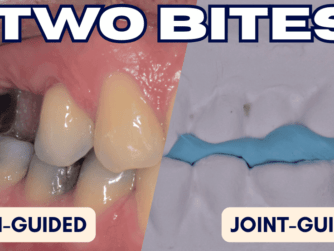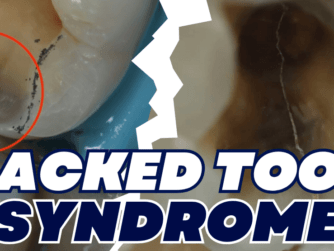Podcast: Play in new window | Download (Duration: 1:10:12 — 98.9MB)
Subscribe: RSS
After the success of PDP103 Adhesive Full Mouth Rehabs in 11 Appointments, we’re here again to discuss how to plan the Wax Up, Mock up and temporaries using bis-acryl with Dr Devang Patel.
Protrusive Dental Pearl: How I communicate a high RCT risk: For ordinary patients, I would always say “YOUR tooth decay (in YOUR tooth)/ YOUR filling was very deep.” But for some patients who you feel would make trouble, I would continue to add “…if we do nothing, then your tooth will eventually be in a worse situation. And you may lose your tooth. This could be a painful process as well. If I do something, then that involves drilling your tooth decay, drilling the soft bits of your tooth away and drilling away the old filling that’s leaking. Drilling is not a nice thing. So by drilling, the drill is damaging your nerve. Your nerve may die and need a Root Canal.”
Highlights from this episode:
- Appointment 2: Patients’ Records (Impressions) 11:35
- Patients’ Vibe as part of Assessment before planning treatment 18:29
- Load Testing as part of Assessment 24:22
- Type of toothwear to consider the type of arch reconstruction 31:48
- Curve of Spee as part of Assessment 36:25
- Guidelines regarding Re-RCT before restoring 40:40
- Comprehensive Evaluation among Patients 45:32
- Appointment 3: Mock-up and Temporaries 51:58
Check out this occlusion one-day course, hands-on and theory for the Kana Dental Academy. With amazing Speakers line-up (some of them are Protrusive Dental Podcast Alumni)

If you enjoyed this episode, be sure to check out the first part Adhesive Full Mouth Rehabs in 11 Appointments and the third part Adhesive Full Mouth Rehabs Part 3








[…] If you enjoyed this episode, be sure to check out the first part Adhesive Full Mouth Rehabs in 11 Appointments and the second part Adhesive Full Mouth Rehabs Part 2 – Wax Up and Temporaries […]
[…] you enjoyed this episode, be sure to check out the second part Adhesive Full Mouth Rehabs Part 2 – Wax Up and Temporaries and the third part Adhesive Full Mouth Rehabs Part […]